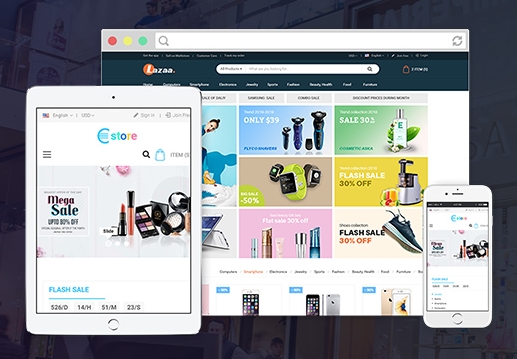SEO Audit : If your business is already operational, then a thorough SEO audit of your website is a must. Not only does it give you an in-depth understanding of how your website is actually performing, but it creates a framework for your business to grow. SEO, or Search Engine Optimization, is what allows your business to be found online. Without intelligent SEO, you might as well consider your business location to be impossible...
1. Book a Free Consultation You can book a free consultation with our experts in regards to your ECommerce web development services requirements. Reach out to our ECommerce development agency via Skype, Email, or Phone. 2. Project Discussion We assign business analyst to discuss your project requirements further. Our BA will ensure that you provide us with each & every information that is necessary to execute project in a progressive manner. 3. Finalize Project Terms & Agreement Our ECommerce...
The eCommerce market is competitive. At this, you need to find only the best eCommerce website development services company to get your brick-and-mortar store online. Here are a few tips that will help you pick your ideal eCommerce web development company: Check Reviews: An experienced eCommerce development services company should have a solid presence on B2B review sites such as Clutch. You can check ours here: Clutch portfolio. Check Portfolios: Companies often have pages for portfolios...
To ensure consistent performance, we provide a 90-days Wordpress web development support to all our clients which starts when your last milestone is accomplished and delivered. It is even possible for you to extend the support by paying an incremental amount.
In total, we hold a team of 60+ developers who have expertise in different eCommerce technologies like Magento, WooCommerce, Shopify etc. Talking about WooCommerce, we have a team of 20+ dedicated developers who are skilled enough to offer you tailored web solutions to serve your business needs. For every individual project, we assign a team lead or BA who is responsible for conveying the project’s progress to you on daily basis. You can keep...
We follow both fixed price and hourly rate model during develop ecommerce project. However, usually, the pricing depends totally on the individual requirements of the projects and clarity in terms of execution strategy and requirements. It is essential to have a comprehensive requirements analysis to ensure that there is no ambiguity in terms of the scope of ecommerce website development requirements. We adopt this strategy to come up with an accurate quotation for the project....
You can stay in contact with either of the assigned team members during any given point of time of project execution. However, to make things simple, we recommend you to have a single point of contact to ensure that there is no scope of miscommunication. Here, we recommend you to stay in direct touch with the Project delivery manager who is the right person to provide you with the regular progress of the project....
First, you should note that eCommerce web development is not a short-term game. It involves a long process of maintenance and constant updates. So, make sure to hire an eCommerce web development agency that can take care of your every requirement including development, deployment, support, and maintenance. Also, choose a company that has prior experience in building eCommerce websites. Make sure to talk directly with the development experts so that you know they have understood...
All the project work built by your offshore team is considered as your intellectual property rights. So, yes, all source codes created by your offshore team is owned by you.
We can start by discussing and finalizing your project requirements. Then after a quick documentation, you can hire dedicated eCommerce developers or a team from an eCommerce website development company for your project.
Recently, we discovered how client loving working with us by their 5 star recommedation



















